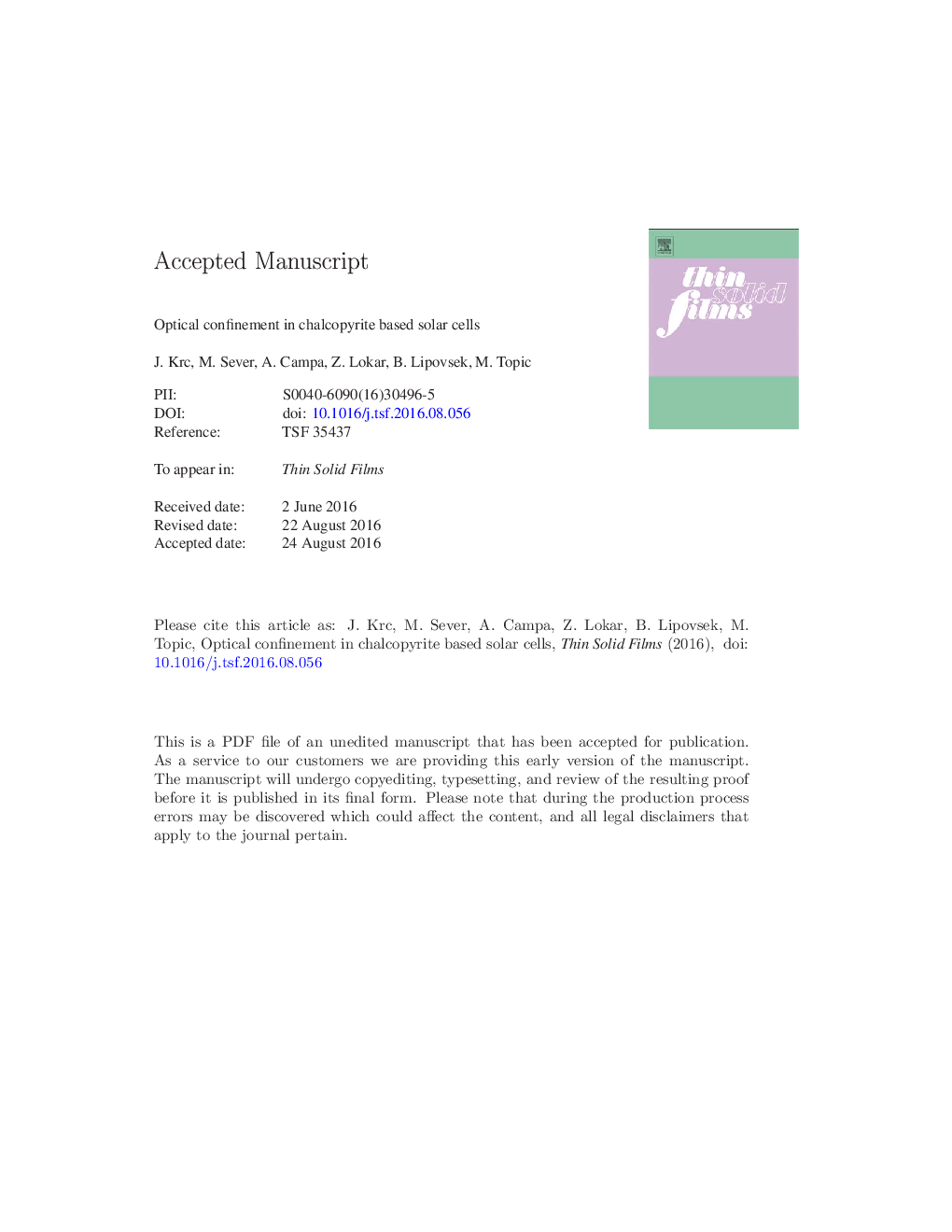| کد مقاله | کد نشریه | سال انتشار | مقاله انگلیسی | نسخه تمام متن |
|---|---|---|---|---|
| 5465945 | 1517979 | 2017 | 41 صفحه PDF | دانلود رایگان |
عنوان انگلیسی مقاله ISI
Optical confinement in chalcopyrite based solar cells
ترجمه فارسی عنوان
محصور نوری در سلول های خورشیدی مبتنی بر کلکوپیریت
دانلود مقاله + سفارش ترجمه
دانلود مقاله ISI انگلیسی
رایگان برای ایرانیان
کلمات کلیدی
سلول های خورشیدی چالکوپییریت، محصور نوری، ضد انعکاس، بازتابنده نوری، پراکندگی نور، بستر بافت
موضوعات مرتبط
مهندسی و علوم پایه
مهندسی مواد
فناوری نانو (نانو تکنولوژی)
چکیده انگلیسی
Potential gains in short-circuit current density related to improvements in optical confinement in chalcopyrite based solar cells are studied and quantified by means of optical simulations. In the first part idealised optical conditions - anti-reflection at front interfaces, high reflection at back contact and light scattering - are introduced by simulating realistic scenarios of Cu(In, Ga)Se2 (CIGS) solar cells with 2000Â nm thick and 300Â nm ultra-thin CIGS absorber, including the encapsulation at the front. For anti-reflection effect at front interfaces simulations revealed that in the photovoltaic module structure the most critical reflectance is the reflectance of the front surface of the protecting glass (possible 4.4% gain in short-circuit current density) and not the one at the front transparent conductive oxide contact, as in the case of non-encapsulated solar cell. Introduction of a highly reflective, highly diffusive back reflector is the most crucial point to improve the short-circuit current density of the ultra-thin devices. Potential for 15.8% gain in short-circuit current density related to ideal reflectance and additional 17.4% related to ideal scattering introduced at the back contact was revealed. A concrete example of light management structure was investigated in the second part by employing fully three-dimensional rigorous optical simulations. A semi-ellipsoidal texture was introduced to the substrate of the ultra-thin device. By using ZrN back reflector in simulations the gains in short-circuit current density related to the optimised size of the texture reach 10%, whereas in the case of an ideal highly reflective contact the gain is >Â 22% according to simulations.
ناشر
Database: Elsevier - ScienceDirect (ساینس دایرکت)
Journal: Thin Solid Films - Volume 633, 1 July 2017, Pages 193-201
Journal: Thin Solid Films - Volume 633, 1 July 2017, Pages 193-201
نویسندگان
J. Krc, M. Sever, A. Campa, Z. Lokar, B. Lipovsek, M. Topic,
